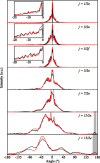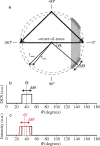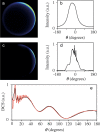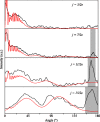Analysis of velocity-mapped ion images from high-resolution crossed-beam scattering experiments: a tutorial review
- PMID: 26322265
- PMCID: PMC4551116
- DOI: 10.1140/epjti/s40485-015-0020-z
Analysis of velocity-mapped ion images from high-resolution crossed-beam scattering experiments: a tutorial review
Abstract
A Stark decelerator produces beams of molecules with high quantum state purity, and small spatial, temporal and velocity spreads. These tamed molecular beams are ideally suited for high-resolution crossed beam scattering experiments. When velocity map imaging is used, the Stark decelerator allows the measurement of scattering images with unprecedented radial sharpness and angular resolution. Differential cross sections must be extracted from these high-resolution images with extreme care, however. Common image analysis techniques that are used throughout in crossed beam experiments can result in systematic errors, in particular in the determination of collision energy, and the allocation of scattering angles to observed peaks in the angular scattering distribution. Using a high-resolution data set on inelastic collisions of velocity-controlled NO radicals with Ne atoms, we describe the challenges met by the high resolution, and present methods to mitigate or overcome them. PACS Codes: 34.50.-s; 37.10.Mn.
Keywords: Differential cross sections; Image analysis; Inelastic scattering; Ion imaging; Molecular beams; Stark decelerator; VMI.
Figures












References
-
- Eppink ATJB, Parker DH. Velocity map imaging of ions and electrons using electrostatic lenses: Application in photoelectron and photofragment ion imaging of molecular oxygen. Rev Sci Instrum. 1997;68:3477. doi: 10.1063/1.1148310. - DOI
LinkOut - more resources
Full Text Sources
Other Literature Sources
Miscellaneous
